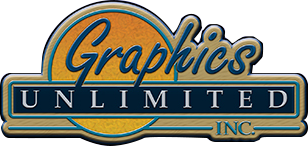Anodized Nameplates
Anodizing is used to create abrasion and chemical-resistant coating for aluminum nameplates and panels. Anodic coatings are used to retard oxidation in aluminum by forcing the oxidation of the aluminum through electrolytic methods in conjunction with dyes.
Anodized aluminum parts are specified in many military, automotive, aircraft, and appliance applications. Anodizing can be used to simulate various materials such as brass, copper, and bronze at a fraction of the cost of those materials. The anodizing and printing processes allow exceptional sharpness and resolution of a copy. Parts may be selectively dyed with additional colors, permitting multiple colors to be used on the same part.
Certain anodized colors tend to fade in ultraviolet light, so care must be taken when selecting colors that will be exposed to direct sunlight. Matching custom colors is very difficult because the colors are dyed and not printed. Additional color matching tolerance must be allowed when a custom color is specified.
Anodized parts are often used in conjunction with other processes to create unique and lasting products such as etched nameplates, screen printed nameplates, and lithographed nameplates.
Finishes on aluminum to be anodized are applied prior to anodizing. They include polished aluminum, satin-brushed, and non-specular matte.
Anodized aluminum provides an excellent base for subsequent finishes and treatments, such as adhesives, paints, and inks. Anodizing aluminum offers a very attractive and long-lasting product.
ANODIZING PROCESS
Anodizing is forced oxidation of aluminum using sulfuric acid with controlled time and direct current to open the pores of the aluminum, then introducing a dye that becomes an integral part of the aluminum. By applying an anodizing resist using a stencil or screen, color can be selectively dyed into the material, creating one or more anodized colors on the product.
APPLICATION
Indoor: Excellent
Outdoor: Good (dependent on the color selected)
Aircraft and aeronautical: Used near hydraulic fluids, skydrol, and other fluids
Marine and off-shore environments
Decorative panels, bezels, escutcheons, overlays, and nameplates
Military and identification markings and specifications
Automotive and appliance parts
Any application requiring exceptional durability (both abrasion and chemical)
COLORS
Most colors can be used in this process, although repeatability is difficult because parts are dyed, not painted or printed. Certain colors, such as yellow, appear more gold than yellow when anodized. Additional tolerances must be allowed when matching to custom colors

